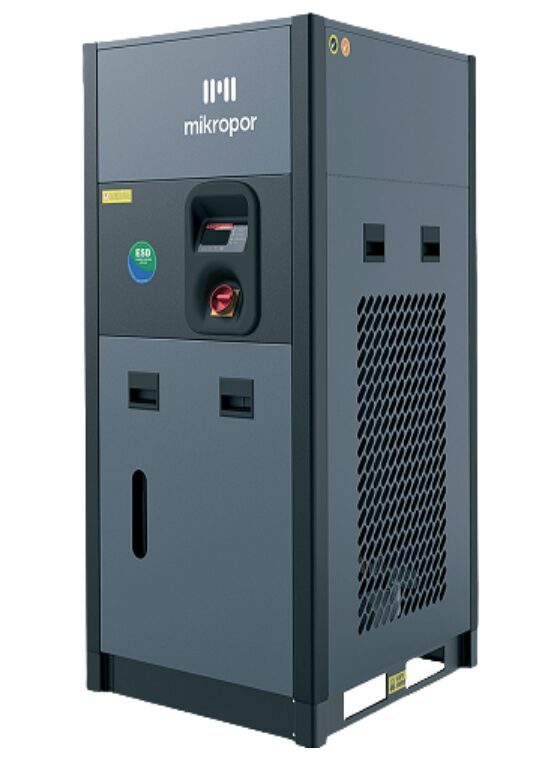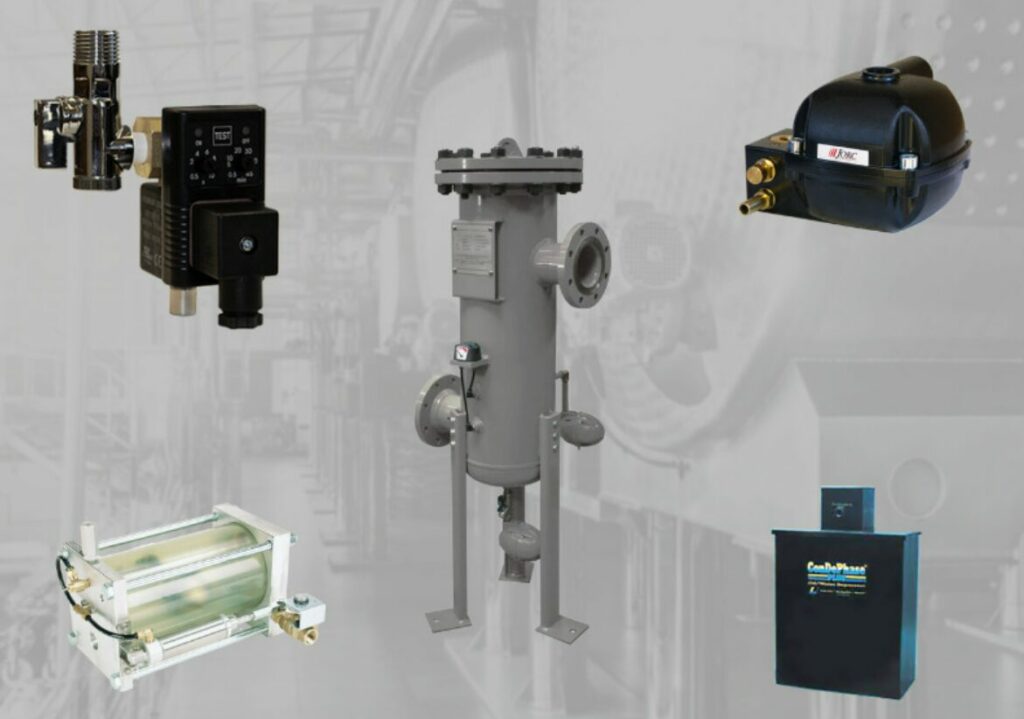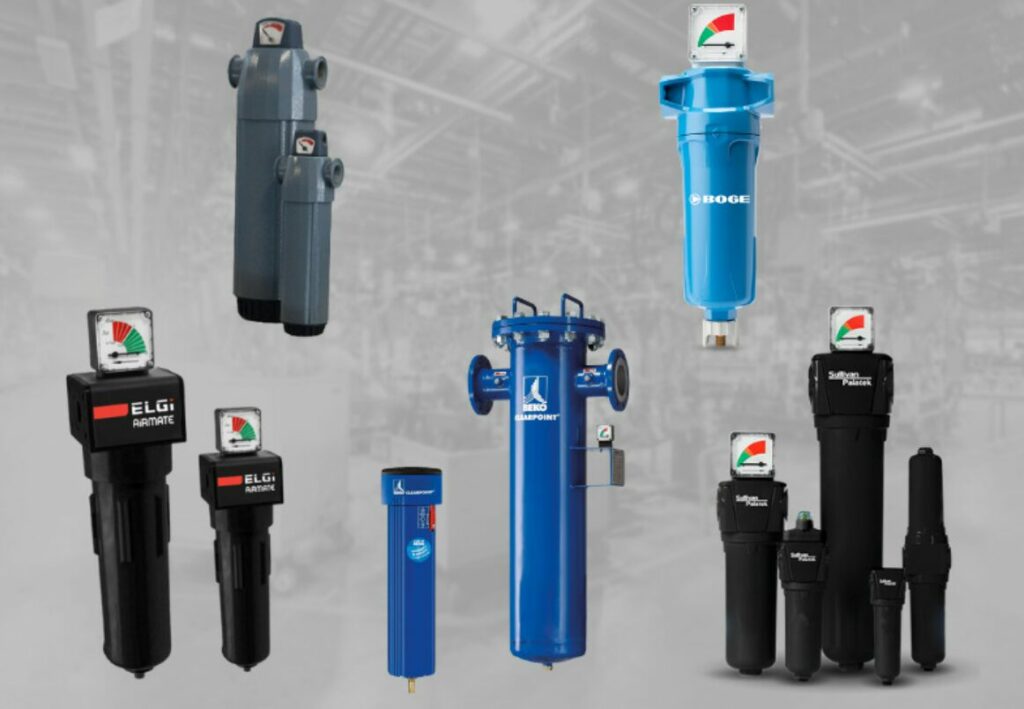- 715 Corporate Center Ct Suite A, Westminster, MD 21157
- help@compressormaintenance.com
- 410-876-5141
- Available 24/7 for Emergencies
Condensate, which contains water and oil, can lead to corrosion, contamination, and equipment damage if not properly managed. Effective condensate management ensures moisture is removed from the system, preventing damage to tools, pipes, and end products while complying with environmental regulations.
Common air dryers include refrigerated dryers (ideal for general applications), desiccant dryers (for ultra-dry air in sensitive industries), and membrane dryers (compact solutions for point-of-use drying). Each type addresses different moisture removal needs based on the application and required air quality.
Filters and separators remove contaminants like oil, particulates, and water from the compressed air, ensuring clean air reaches your equipment. This prevents wear and tear on machinery, reduces maintenance costs, and improves product quality in applications where clean air is critical.
Air converters, such as nitrogen generators or heat recovery systems, transform compressed air into valuable outputs like nitrogen or usable heat. These systems enhance efficiency, reduce energy costs, and expand the functionality of compressed air systems.
Mikropor Cycling Dryers cools a special liquid and stores it in a cold tank having 34 °F temperature. This liquid is cycled in the dryer to cool down compressed air. This technology helps the customers to consume much less energy when the dryer gets 5-95 % air flow.

Compressed air is not pure. The compressed air contains inherent impurities that are detrimental to the end application. Some common contaminants of compressed air are water, dirt, small wear particles, bacteria and sometimes even degraded lubricating oil. All these impurities mix and often form an acidic sludge that might increase the wear and tear of end applications like pneumatic tools, machineries, valves orifices and electro-pneumatic controls like relays. For increased reliability and energy savings, compressed air must be totally clean and dry.
We offer a wide range of pneumatic downstream accessories that ensures application specific air quality norms are met as per the ISO 8573 standards.
Condensation is a by-product of all air compressors. It is formed from the mixture of ambient hydrocarbons, compressor lubricant, moisture, and particulates, that have been concentrated and removed from the air stream by dryers and filters.
Compressor Maintenance partners with Air System Products (ASP), SPXFlow, BEKO, Mikropor, Nano, and JORC to provide a wide arrange of:

The BOGE Converter guarantees, in terms of residual oil content, a permanent Class 0 compressed air quality rating in accordance with ISO 8573-1, as well as oil-free condensate. A catalyst converts the oil and active hydrocarbons in the compressed air into water and CO². In contrast to conventional filter systems like activated carbon, the air quality is constant. Additionally, unlike oil compressors, the compressed air quality is not dependent on the hydrocarbon content of the ambient air. The catalyst works independently of the temperature and humidity of the reprocessed compressed air.

Air dryers suppress the dew point of compressed air by removing water from it. Compressed air can contain moisture, which, under the right conditions, can reach the dew point temperature and condense into a harmful liquid. This can be a big problem, as it can contaminate products or equipment, cause frozen pipes, and lead to corrosion.
Compressor Maintenance Co. partners with Aircel, BEKO, and SPXFlow to provide a wide range of:

To maintain peak operation of compressed systems and protect downstream equipment, filters and separators are recommended for removal of aerosols, oil vapors, and particulates that may be present.
Compressor Maintenance Co. partners with BEKO, BOGE, ELGi, Mikropor, and Sullivan-Palatek to provide a wide range of Filters and Separators:

Compressed air is not pure. The compressed air contains inherent impurities that are detrimental to the end application. Some common contaminants of compressed air are water, dirt, small wear particles, bacteria and sometimes even degraded lubricating oil. All these impurities mix and often form an acidic sludge that might increase the wear and tear of end applications like pneumatic tools, machineries, valves orifices and electro-pneumatic controls like relays. For increased reliability and energy savings, compressed air must be totally clean and dry.
We offer a wide range of pneumatic downstream accessories that ensures application specific air quality norms are met as per the ISO 8573 standards.
Condensation is a by-product of all air compressors. It is formed from the mixture of ambient hydrocarbons, compressor lubricant, moisture, and particulates, that have been concentrated and removed from the air stream by dryers and filters.
Compressor Maintenance partners with Air System Products (ASP), SPXFlow, BEKO, Mikropor, Nano, and JORC to provide a wide arrange of:

The BOGE Converter guarantees, in terms of residual oil content, a permanent Class 0 compressed air quality rating in accordance with ISO 8573-1, as well as oil-free condensate. A catalyst converts the oil and active hydrocarbons in the compressed air into water and CO². In contrast to conventional filter systems like activated carbon, the air quality is constant. Additionally, unlike oil compressors, the compressed air quality is not dependent on the hydrocarbon content of the ambient air. The catalyst works independently of the temperature and humidity of the reprocessed compressed air.

Air dryers suppress the dew point of compressed air by removing water from it. Compressed air can contain moisture, which, under the right conditions, can reach the dew point temperature and condense into a harmful liquid. This can be a big problem, as it can contaminate products or equipment, cause frozen pipes, and lead to corrosion.
Compressor Maintenance Co. partners with Aircel, BEKO, and SPXFlow to provide a wide range of:

To maintain peak operation of compressed systems and protect downstream equipment, filters and separators are recommended for removal of aerosols, oil vapors, and particulates that may be present.
Compressor Maintenance Co. partners with BEKO, BOGE, ELGi, Mikropor, and Sullivan-Palatek to provide a wide range of Filters and Separators:

Mikropor Cycling Dryers cools a special liquid and stores it in a cold tank having 34 °F temperature. This liquid is cycled in the dryer to cool down compressed air. This technology helps the customers to consume much less energy when the dryer gets 5-95 % air flow.

Condensate, which contains water and oil, can lead to corrosion, contamination, and equipment damage if not properly managed. Effective condensate management ensures moisture is removed from the system, preventing damage to tools, pipes, and end products while complying with environmental regulations.
Common air dryers include refrigerated dryers (ideal for general applications), desiccant dryers (for ultra-dry air in sensitive industries), and membrane dryers (compact solutions for point-of-use drying). Each type addresses different moisture removal needs based on the application and required air quality.
Filters and separators remove contaminants like oil, particulates, and water from the compressed air, ensuring clean air reaches your equipment. This prevents wear and tear on machinery, reduces maintenance costs, and improves product quality in applications where clean air is critical.
Air converters, such as nitrogen generators or heat recovery systems, transform compressed air into valuable outputs like nitrogen or usable heat. These systems enhance efficiency, reduce energy costs, and expand the functionality of compressed air systems.
Enough about us, let’s talk about you. Tell us about your project needs.